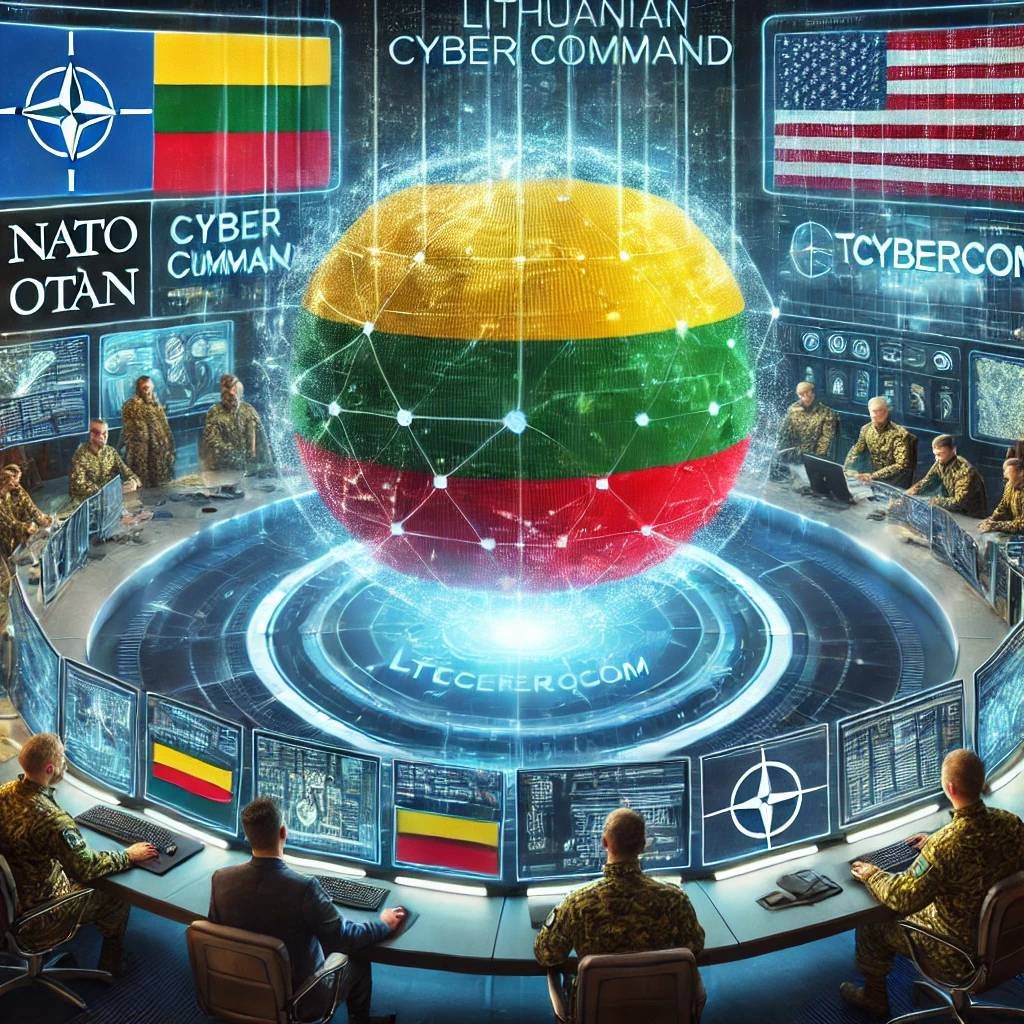Strengthening Cybersecurity: Lithuania’s New Cyber Command
Introduction
On January 1, 2025, Lithuania unveiled the Lithuanian Cyber Command (LTCYBERCOM), marking a pivotal step in fortifying its national defense and cybersecurity posture. Spearheaded by the Ministry of National Defence, this new military unit consolidates cyber resources, enhances collaboration with NATO, and positions Lithuania as a proactive leader in digital security within the Baltic region.
This article explores the significance of LTCYBERCOM, its structure, and its role in bolstering national and NATO cybersecurity resilience.
Get Lifetime Access to My Prompts Library: https://ko-fi.com/s/277d07bae3
Lithuania’s New Cyber Command: A Strategic Move for National and NATO Cybersecurity Resilience
Introduction
On January 1, 2025, Lithuania unveiled the Lithuanian Cyber Command (LTCYBERCOM), marking a pivotal step in fortifying its national defense and cybersecurity posture. Spearheaded by the Ministry of National Defence, this new military unit consolidates cyber resources, enhances collaboration with NATO, and positions Lithuania as a proactive leader in digital security within the Baltic region.
This article explores the significance of LTCYBERCOM, its structure, and its role in bolstering national and NATO cybersecurity resilience.
Outline
| Section | Subsection |
|---|---|
| 1. Introduction to LTCYBERCOM | – Why LTCYBERCOM was established – The context of cyber threats |
| 2. LTCYBERCOM’s Structure and Responsibilities | – Command Headquarters – CIS Battalion – IT Services of Cyber Defence |
| 3. Strengthening Lithuania’s National Security | – Enhancing military coordination – Protecting critical infrastructure |
| 4. NATO Collaboration and Cyber Defense | – Lithuania’s role in NATO – Aligning with NATO’s cybersecurity objectives |
| 5. Responding to Geopolitical Cyber Threats | – Threats from neighboring Russia – The rise of cyber operations in the region |
| 6. Complementary Roles of National Agencies | – Role of the National Cyber Security Centre – Civilian and military synergy |
| 7. LTCYBERCOM’s Broader Impact | – Building public-private partnerships – Strengthening international alliances |
| 8. FAQs on Lithuania’s Cyber Defense Strategy | – Common concerns and expert insights |
Introduction to LTCYBERCOM
Why LTCYBERCOM Was Established
As digital threats escalate, Lithuania has recognized the importance of cyber defense in modern warfare. The establishment of LTCYBERCOM reflects this urgency, unifying the country’s cyber resources to counter emerging threats effectively.
Geopolitical tensions, particularly with neighboring Russia, have made Lithuania a prime target for cyberattacks. These attacks underscore the need for a coordinated and robust cyber defense strategy.
LTCYBERCOM’s Structure and Responsibilities
1. Command Headquarters
The central hub for planning and executing cyber operations, ensuring a unified response to digital threats.
2. CIS Battalion
The Lithuanian Great Hetman Kristupas Radvila Perkūnas CIS Battalion provides robust communication and information services to support military operations.
3. IT Services of Cyber Defence
Revamped from the Ministry of National Defence’s previous IT service, this division focuses on managing strategic communications and cyber defense systems.
Strengthening Lithuania’s National Security
Enhanced Military Coordination
LTCYBERCOM streamlines cyber operations, enabling seamless coordination across military units and ensuring rapid incident response.
Protecting Critical Infrastructure
From power grids to financial systems, LTCYBERCOM prioritizes the security of critical infrastructure, safeguarding Lithuania’s sovereignty against cyberattacks.
NATO Collaboration and Cyber Defense
As a NATO member since 2004, Lithuania plays a vital role in the alliance’s collective security efforts. LTCYBERCOM enhances this collaboration by:
- Interoperability: Ensuring seamless integration with NATO’s cyber defense strategies.
- Shared Intelligence: Contributing valuable insights and threat intelligence to strengthen NATO’s digital resilience.
This partnership underscores Lithuania’s commitment to collective defense and its proactive stance in addressing cyber threats.
Responding to Geopolitical Cyber Threats
Cyber Threats from Russia
Lithuania’s investment in cybersecurity is a direct response to the rise in Russian cyber operations targeting NATO allies. These attacks often aim to disrupt critical infrastructure and sow discord among member states.
Rising Regional Cyber Operations
A 2024 Google report highlighted increased Russian cyber activities, emphasizing the urgency of robust cyber defenses in Lithuania and the broader Baltic region.
Complementary Roles of National Agencies
National Cyber Security Centre (NCSC)
The NCSC focuses on civilian cybersecurity, providing incident response services and coordinating annual exercises like Cyber Shield to enhance resilience across critical sectors.
Civilian and Military Synergy
By aligning LTCYBERCOM’s military focus with NCSC’s civilian efforts, Lithuania ensures comprehensive coverage of its digital security landscape.
LTCYBERCOM’s Broader Impact
Building Public-Private Partnerships
LTCYBERCOM seeks to foster collaboration with private sector entities, leveraging expertise and resources to fortify national cybersecurity.
Strengthening International Alliances
Beyond NATO, Lithuania’s cyber command contributes to global cybersecurity initiatives, promoting cross-border cooperation in tackling digital threats.

FAQs on Lithuania’s Cyber Defense Strategy
1. Why is Lithuania investing heavily in cyber defense?
Geopolitical tensions and a surge in cyberattacks, particularly from Russia, have made robust cybersecurity essential for safeguarding national and allied interests.
2. How does LTCYBERCOM enhance NATO collaboration?
By aligning its strategies with NATO’s cybersecurity framework, LTCYBERCOM ensures interoperability and strengthens collective defense efforts.
3. What role does the NCSC play in Lithuania’s cybersecurity?
The NCSC focuses on civilian cybersecurity, providing incident response services and coordinating resilience-building exercises like Cyber Shield.
Conclusion
The launch of the Lithuanian Cyber Command represents a strategic leap in strengthening national and NATO cybersecurity resilience. By consolidating cyber resources and fostering international collaboration, Lithuania is setting a benchmark for proactive defense in the digital age.
As cyberattacks become increasingly integral to modern conflict, LTCYBERCOM equips Lithuania with the tools and strategies needed to safeguard its sovereignty while supporting its allies in a rapidly evolving threat landscape.






